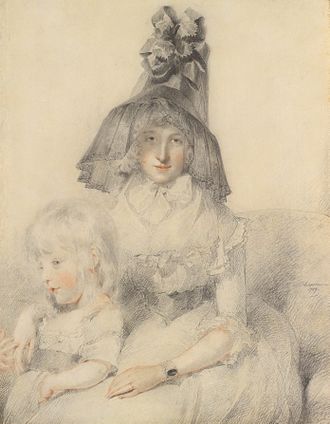by Simon Fowler
Charlotte Papendiek (1765-1839) was the daughter of Queen Charlotte’s hairdresser, Friedrich Albert. In her memoirs she wrote about growing up in London and Richmond, where she spent much time with the younger members of the Royal Family. She attended a school locally where: “on a half-holiday first to the old Maid-of-Honour (on Richmond Green) shop for my bun, then to papa at the Richmond Lodge, into the royal nursery for a little play with Prince William under the eye of dear nurse Chapman.”

Now fortunately extinct, smallpox was a horrific virus which killed thousands each year and marked tens of thousands of survivors for life. Earlier in the 18th century a primitive vaccine had been introduced from Turkey. In August 1769, when Charlotte was aged five:
“It was settled that Prince Ernest, her Majesty’s brother, Prince William (later William IV), and myself should be inoculated. I was taken to the Queen’s house (in Kew), there held by my father on one chair, the Prince by his nurse on another, their Majesties being present. It was first performed on Prince Ernest, then on myself, then on Prince William, after this manner: two punctures in the arm near to each other were made with the point of a lancet, through which a thread was drawn several times under the skin and this on both arms. The operation was performed by Surgeon Bromfield (the Queen’s Surgeon), and was one of smarting pain, for we both cried. I was taken home in a sedan, kept warm, and in a few days had a convulsion, fever, and the pustules inflamed. On one arm they rose and dried off regularly. Prince William had pustules besides those on the arms, no convulsion, and was less ill, which was attributed to the female constitution being more delicate. On Prince Ernest it took no effect
whatever. On our ultimate recovery all was considered right, and that we were secure from future disease.”
Unfortunately, the inoculation did not take. In September 1775, Charlotte caught smallpox. For six weeks she was at death’s door:
“No one could give me any comfort or alleviate pain. I could only be lifted by four people, one at each corner of the sheet to have my bed made; for not a pin’s prick could be placed between the pustules. Then all my beauty was gone, which before my father was flattered by. I was lost to all the fond hopes in which had he indulged.
After Charlotte’s illness, her father decided that her baby sister Sophia should be inoculated, which was performed by Mr Dundas, the Queen’s apothecary in Richmond. Fortunately, the inoculation worked without any side effects.
This article was first published in Twickenham and Richmond Tribune, 28 August 2021.